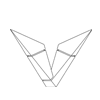The Best Software for 3D Visualization: A Comprehensive Guide
The Best Software for 3D Visualization: A Comprehensive Guide
Introduction to 3D Visualization
3D visualization refers to the process of creating graphical content that represents three-dimensional objects or environments on a two-dimensional medium. This technique has gained immense significance across various industries, including architecture, gaming, film, and product design. The ability to visualize an idea in three dimensions allows professionals to communicate their concepts more effectively and engage audiences in a realistic manner.
The evolution of 3D visualization techniques has evolved dramatically over the years. Initially, professionals relied on traditional methods such as hand-drawn sketches and physical models to showcase their concepts. With the advancement of computational technology, the introduction of computer-aided design (CAD) revolutionized the way creators achieve visual representation. Today, 3D visualization software packages offer advanced features that enhance the capabilities of designers, allowing them to generate intricate and high-fidelity models with ease.
In the realm of architecture, for instance, 3D visualization is indispensable for visualizing building designs and layouts. This allows architects and clients to better understand spatial relationships and aesthetics before construction begins. Similarly, in the gaming industry, 3D visualization has become pivotal in creating immersive environments and lifelike character models, significantly enhancing user experience.
Furthermore, the film industry utilizes 3D visualization to develop animations and special effects that captivate audiences. Meanwhile, product designers leverage this technology to create realistic prototypes that aid in marketing and consumer testing. A common thread linking these sectors is the pursuit of software that offers specific features tailored to their needs. These typically include user-friendly interfaces, realistic rendering capabilities, and compatibility with various file formats. Such features are essential as they enable professionals to efficiently translate their ideas into compelling visual narratives.
Criteria for Selecting 3D Visualization Software
When choosing 3D visualization software, several key factors must be taken into account to ensure that the selected tool meets both current and future project needs. The first criterion is usability. The software should have an intuitive interface that facilitates a smooth workflow, allowing users to efficiently navigate its various features and functions. A steeper learning curve can hinder productivity and may lead to frustration, especially for those new to 3D design.
Compatibility with existing tools is another essential factor. The chosen software should seamlessly integrate with other programs, which can enhance overall productivity and limit disruptions in workflows. This often involves consideration of file formats and the ability to import and export models conveniently. Ensuring that the software works well with commonly used tools in the industry can save substantial time and effort during project execution.
Rendering capabilities are critical for producing high-quality visuals. Effective 3D visualization software should be able to render detailed images quickly without compromising on quality. This is particularly important in fields where presentation can influence decision-making, such as architecture and product design. Users should also assess the level of detail achievable with the software, as this can impact the visual fidelity of created models.
Support for real-time visualization is a valuable feature, particularly in scenarios where immediate feedback is essential. This capability allows designers to make adjustments on the fly and see how modifications affect the overall appearance of the model. Pricing models also play a significant role. Options may vary from one-time purchases to subscription-based services, and it is vital to choose a plan that aligns with budgetary constraints and project requirements.
Lastly, community support and comprehensive documentation can significantly influence the ease of learning and troubleshooting. A strong user community often results in more resources, tutorials, and forums where users can seek assistance and share knowledge, which can greatly enhance the overall experience with the software.
Top 5 Software Choices for 3D Visualization
In the realm of 3D visualization, several software options stand out due to their unique capabilities and targeted applications. Below is a detailed review of the top five software choices for professionals and hobbyists alike.
1. Blender: Blender is an open-source 3D modeling and animation software that has gained immense popularity due to its extensive feature set and active community support. It runs on various operating systems, including Windows, macOS, and Linux. Blender offers robust tools for modeling, rendering, and animation, making it suitable for a broad range of applications—from game development to architectural visualization. Its user interface, though initially daunting, provides extensive flexibility for advanced users.
2. Autodesk 3ds Max: Renowned for its industry-standard tools, Autodesk 3ds Max is a preferred choice among professionals involved in architecture, engineering, and design. Compatible with Windows, it excels in rendering high-quality visuals and is equipped with powerful modeling tools. The software’s ease of integration with other Autodesk products further enhances its appeal, specifically for architectural visualization projects. Its robust plugin ecosystem allows users to extend functionalities seamlessly.
3. Cinema 4D: Cinema 4D by Maxon is celebrated for its intuitive interface, making it a popular choice for motion graphics and visual effects artists. Like the previous software options, it is compatible with multiple operating systems. Cinema 4D’s procedural workflow and exceptional rendering capabilities make it ideal for creating complex visualizations quickly while maintaining high-quality results.
4. SketchUp: SketchUp stands out as a user-friendly tool primarily used for architectural design and prototyping. It runs on both Windows and macOS and is known for its fast learning curve, making it ideal for beginners. The software provides essential tools for quick modeling and has a library filled with pre-existing models to expedite the design process, allowing professionals to focus on creativity rather than technicalities.
5. Lumion: Lumion is an exceptional visualization tool designed specifically for architecture. It works seamlessly with most CAD software, running primarily on Windows. Lumion is known for its real-time rendering capabilities, allowing users to visualize their projects effectively. With an extensive library of materials, models, and environmental elements, it enables architects to present stunning visual narratives without extensive rendering time.
Each of these software options offers a unique set of features and workflows that cater to different user needs and expertise levels, ultimately aiding in the creation of compelling 3D visualizations.
Future Trends and Developments in 3D Visualization Software
The landscape of 3D visualization software is poised for significant transformation, driven by advancements in technology and evolving user needs. One of the foremost trends is the integration of artificial intelligence (AI) into these tools, which can enhance functionality through automated features and intelligent rendering. AI algorithms are becoming adept at generating complex models, textures, and realistic environments, greatly accelerating project timelines and improving the quality of visual outputs. As a result, professionals in the field should embrace AI capabilities to streamline workflows and enhance creativity.
Additionally, the rise of virtual reality (VR) and augmented reality (AR) technologies is set to revolutionize the way 3D visualization is utilized across various sectors. VR enables immersive experiences, allowing users to explore and interact with 3D models within a simulated environment. This application proves invaluable in fields such as architecture, education, and gaming, where experiential learning is paramount. Meanwhile, AR overlays digital information onto the real world, making it easier for users to visualize complex data in a contextual setting. As these technologies mature, software developers will increasingly integrate VR and AR features into their offerings, enhancing the usability and appeal of their tools.
Another area of growth is cloud computing, which offers numerous benefits for 3D visualization projects. By leveraging cloud infrastructure, professionals can access powerful computing resources and collaborate in real-time with teams from different locations. This shift towards cloud-based systems not only fosters collaboration but also facilitates data storage and management, enabling users to work on large-scale projects without the limitations of local hardware. As the software industry continues to evolve, staying abreast of these trends will be crucial for professionals to remain competitive. Adapting to these changes will require investing in the latest tools and embracing innovative practices to fully leverage the capabilities that modern 3D visualization software promises.







